A benefit gained through massage is reduced swelling. Swelling can be a result of injury, trauma or surgery. Swelling is a buildup of excess fluids and metabolic wastes that surround a damaged area to prevent further damage from occurring. Swelling can also be caused by a blockage in the lymphatic system causing lymphedema. Lymphedema most commonly occurs after a surgery. Swelling is tender to touch and often slows down healing. Our massage therapists at Physio.co.uk reduce swelling through massage to help improve recovery, decrease pain and increase movement.
What are the most appropriate types of massage to reduce swelling?
There are many types of massage that can be used to reduce swelling. The most common types of massage used include:
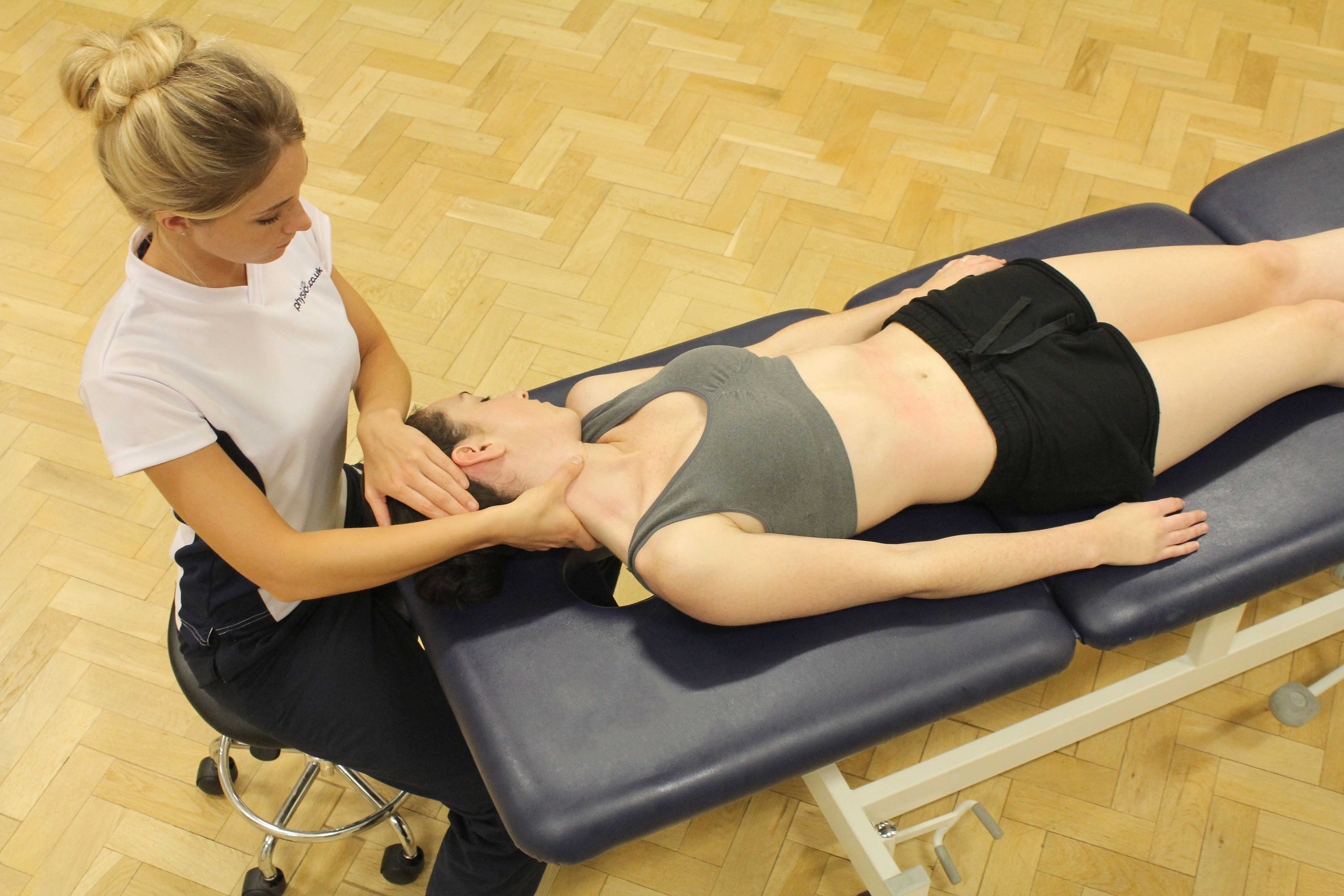 Above: Our massage service can help reduce areas of swelling and inflammation following trauma.
Above: Our massage service can help reduce areas of swelling and inflammation following trauma.The massage types most commonly used to decrease swelling include sports massage and remedial massage.
A sports massage is an effective way of reducing swelling. A sports massage involves using a variety of techniques to increase blood and lymph flow and increase healing. Sport massage can be an intense style massage consisting of a range of pressures used depending on personal preference. Swelling is reducing by the increase in blood and lymph flow. Metabolic wastes are removed more efficiently from the body and healing is increased due to the increase in oxygen and nutrients. Removal of waste products and increased healing both contribute to reduce swelling.
Swelling can be reduced through remedial massage. A remedial massage is most commonly used to improve muscle condition and increase relaxation. After injury, trauma or surgery, the health a muscle decreases causing swelling to occur to prevent further damage. A remedial massage improves muscle condition by increasing the availability of healthy oxygen and nutrients through the manipulation of muscles and increase in blood flow. Improving muscle condition helps to reduce swelling and return movement to normal.
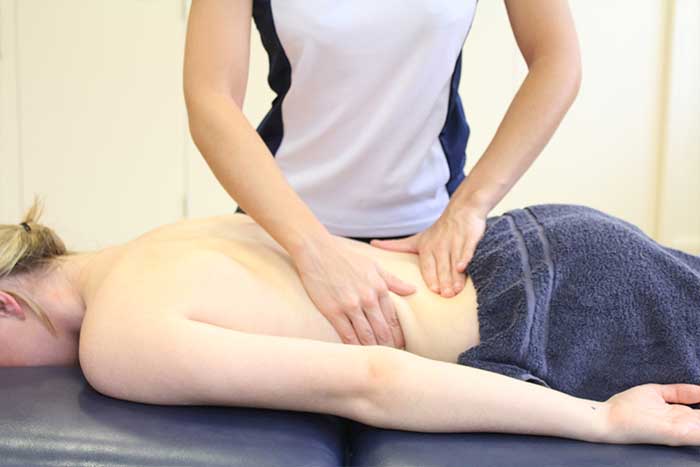
What techniques are used to reduce swelling?
A wide range of techniques can be used to reduce swelling. The techniques most commonly used to reduce swelling include:
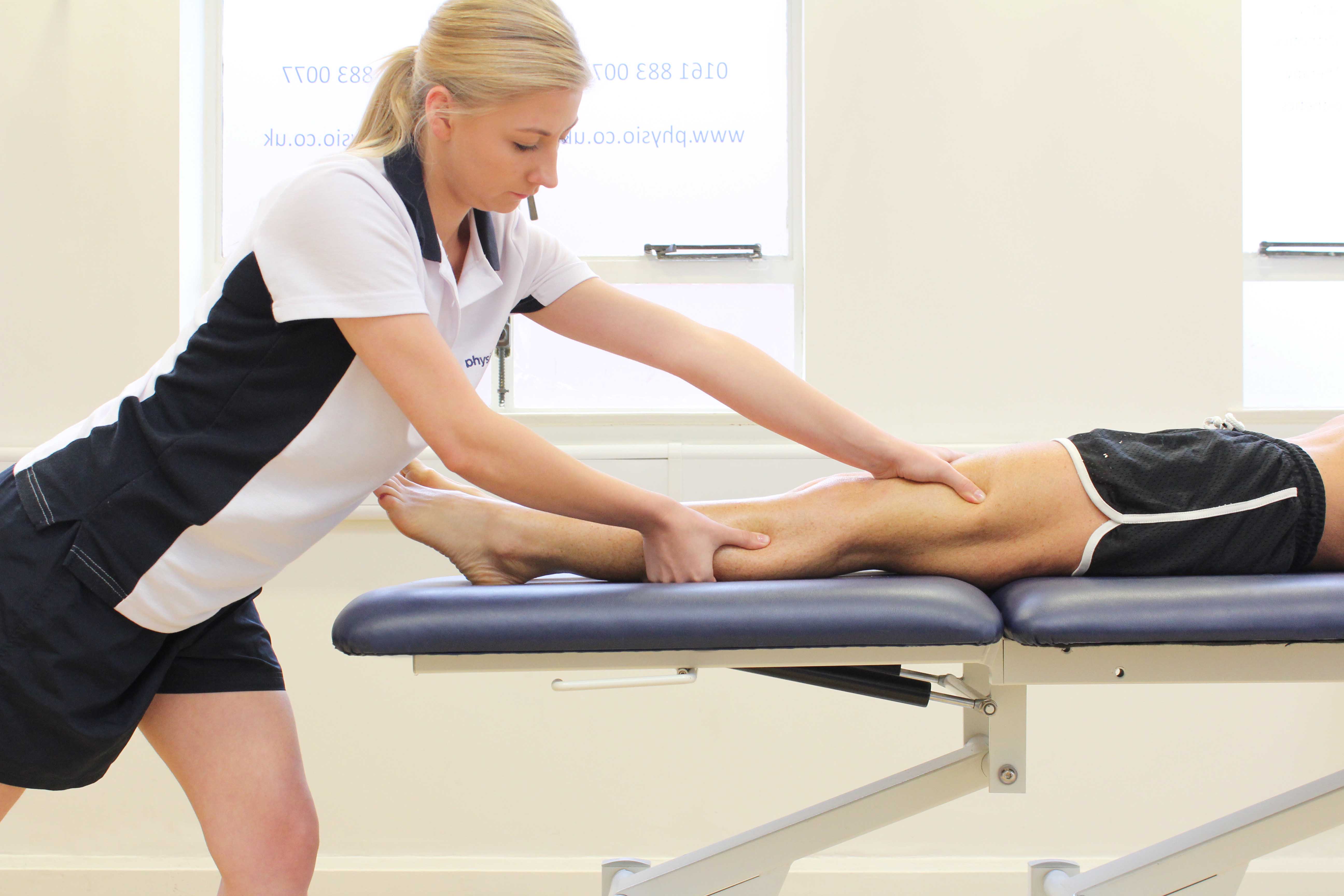 Above: Massage is an effective tool to help kickstart heaing through enhancing circulation around an affected area.
Above: Massage is an effective tool to help kickstart heaing through enhancing circulation around an affected area.The most common techniques used to reduce swelling include effleurage, deep strokes and lymphatic drainage.
Effleurage is often used to help reduce swelling. Effleurage involves applying a gentle pressure to the treatment area using flattened hands and fingers. The gentle pressure used throughout effleurage means that areas that are tender to touch can still be treated. Effleurage is used to gently push the excess fluids within swelling towards glands located at different areas in the body such as armpit, groin and behind the knee. Pushing excess fluids towards different glands within the body using long, direction strokes within effleurage helps to remove them from the body. Removing excess fluids from the body reduces swelling.
Swelling is often reduced using deep strokes. Much like effleurage, deep strokes are performed using flattened hands and fingers. The pressure is a lot firmer than in effleurage to get deeper within muscle fibres. Deep strokes would be used on swelling that has occurred for a long time and is no longer tender to touch. The firm pressure used throughout deep strokes allows the therapists to get deeper within the muscles to help push and remove excess fluids and waste products from the swollen area. Deep strokes create friction between the skin and fingers which stimulates both blood and lymph flow. Stimulation of lymph flow enables waste products and excess fluids more efficiently. Stimulation of blood flow increases oxygen and nutrients available for the treatment area to help repair damaged tissues in order to further reduce swelling.
Lymphatic drainage is effectively used to reduce swelling. Lymphatic drainage is a specific type of massage that involves applying pressure to an area in upwards movements in the direction of glands. The most well know type of gland is sweat glands. Lymphatic drainage is most commonly used for the removal of metabolic wastes from acute swelling. Lymphatic drainage stimulates the lymphatic system to increase lymph flow. The lymph flow picks up the metabolic wastes and removes them through the glands. Increasing removal of metabolic wastes reduces swelling.
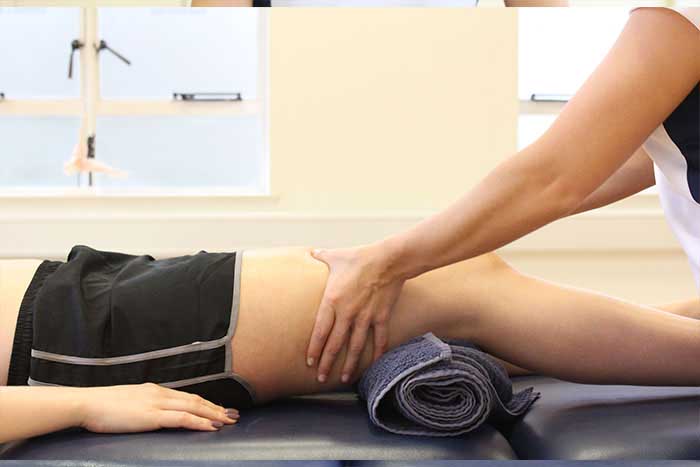
When can a massage help to reduce swelling?
Having a massage to reduce swelling can help on a variety of occasions. The most common occasions reduced swelling can help include:
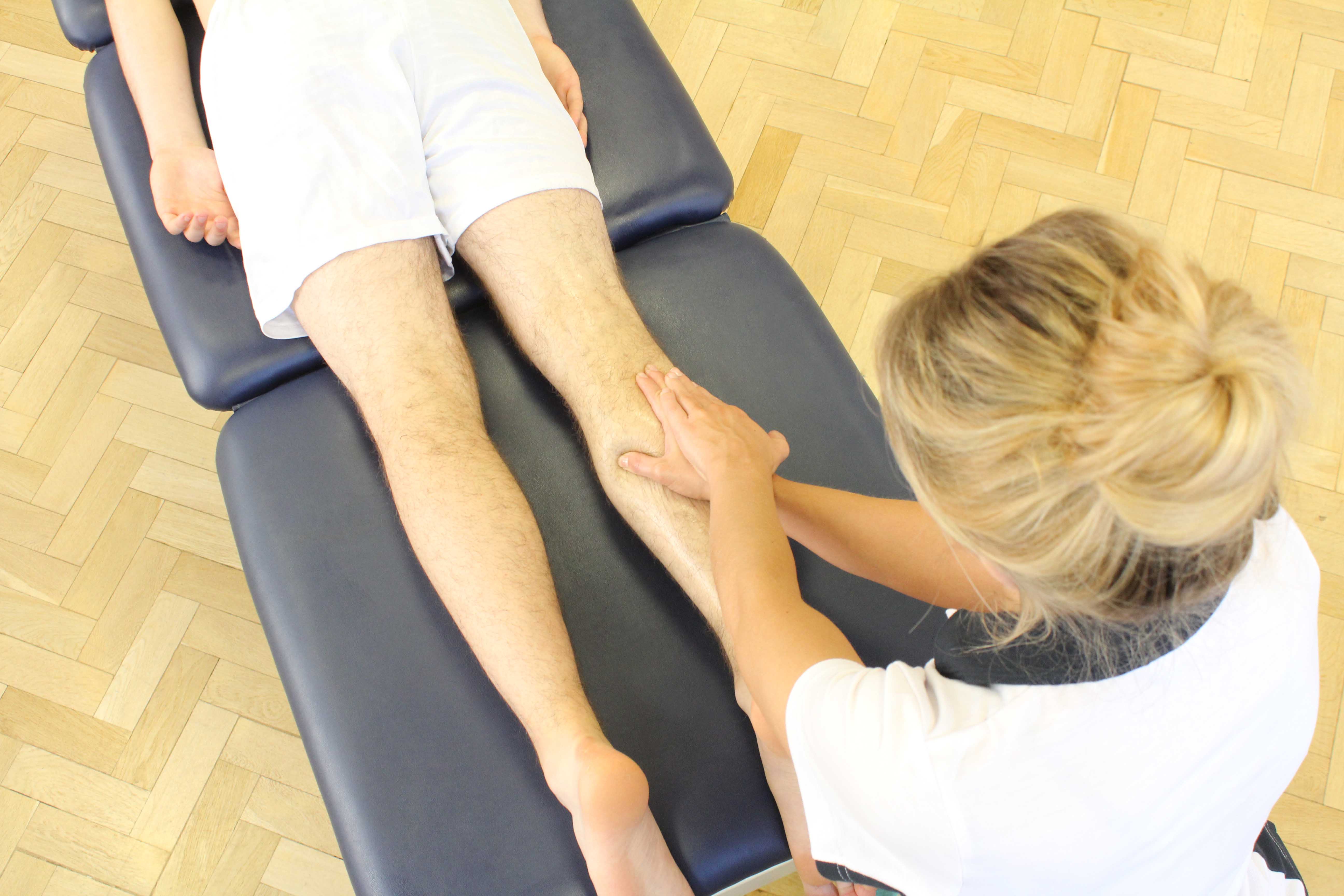 Above: Massage can help reduce the effects of swelling and inflammation through a variety of different techniques.
Above: Massage can help reduce the effects of swelling and inflammation through a variety of different techniques.The occasions that can most commonly be helped by reduced swelling include post injury, post-surgery and acute pain.
Reducing swelling through massage can help post injury. After an injury, swelling occurs due to a buildup of waste products. Swelling will occur to help prevent the injury from worsening however can also increase pain and slow down the healing process. Muscles can often weaken and fatigue when swelling arises due to the inability to move or use the injured area as normal. A massage stimulates the lymphatic system. The lymphatic system is made up of tiny lymph vessels that carry the lymph fluid. Waste products are drained into the lymph fluid and transported out of the body. Removing waste products reduces swelling, increases healing and decrease pain. Increased healing allows muscles to increase in strength and health.
The effects of surgery can be decreased when swelling is reduced. Surgery can cause swelling due to a buildup of scar tissue blocking lymph flow. Blockages of lymphatic flow causes lymphedema. Lymphedema increases pain and restricts movement causing a rise in stress to occur. A massage aims to break down scar tissue and improve the efficiency of the lymphatic system. Breaking down scar tissue reduces blockages and improving the efficiency of the lymphatic system increases the removal of waste products causing swelling.
Reduced swelling can help relieve pain. Swelling occurs to prevent excess movements that could cause further damage. Swelling is tender to touch and restricts movement. Swelling compresses against nerves which gives us the increase in pain. A range of long, deep strokes are used within a massage aiming to flush out the buildup of excess fluids that caused swelling. Flushing out excess fluids reduces swelling. A reduction in swelling decreases compression against nerves and therefore pain is reduced.
What are the physiological effects of massage to reduce swelling?
Various physiological effects occur during a massage to help reduce swelling. The physiological effects that most commonly occur include:
The most common physiological effects that occur during a massage to help reduce swelling include increased venous return, cellular exchange and the removal of waste products.
Increased venous return helps to reduce swelling. Venous return is the rate of blood flow back to the heart. The removal of waste products increases as venous return increases. Metabolic wastes contribute to an increase in swelling. When metabolic wastes are flushed into the lymphatic flow, they are then transferred over into the blood flow where it is then removed from the body. The faster the return blood is transported to and from the heart, the faster metabolic wastes can be removed. The more metabolic wastes removed from the body results in swelling to be reduced more quickly.
Swelling can be reduced when cellular exchange occurs. Cellular exchange involves the exchange of metabolic wastes for healthy nutrients and oxygen. After injury or trauma, metabolic wastes build-up within muscles, which increases swelling. Swelling can often slow down recovery, disabling a person to return to sport or exercise. When cellular exchange occurs, metabolic wastes are removed from the injury site. Removing metabolic wastes helps to start decrease swelling. As the metabolic waste is removed, an increase in blood flow occurs to replace it with nutrients and oxygen. Nutrients and oxygen are essential for the repair of damaged muscle fibres. Replacing metabolic wastes with oxygen and nutrients further reduces swelling and also improves recovery.
The removal of waste products often occurs to reduce swelling. Swelling often occurs as a result of a build-up of waste products. A common condition caused by a build-up of waste products and excess fluids due to a blocked lymphatic system is lymphedema. The lymphatic system is responsible for flushing out the waste products from the body to prevent muscle weakness and improve recovery. When the lymphatic system is blocked, the flushing out of waste products is disabled. A massage stimulates the lymphatic system. A variety of long, directional strokes are used to push the excess fluids and waste products towards different glands in order to be removed from the body. The most well-known glands include the armpit, groin and behind the knee. Stimulation of the lymphatic system and the pushing of excess fluids and waste products towards glands, reduces swelling.
Summary
Reduced swelling involves the removal of excess fluids and metabolic wastes from an injury site. A range of massage types are appropriate to reduce swelling including sports massage and remedial massage. Techniques such as effleurage, deep strokes and lymphatic drainage are all regularly used to help reduce swelling. There are many situations reduced swelling through massage can help including post injury, post-surgery and acute pain. A range of physiological effects can occur during a massage including increased venous return, cellular exchange and the removal of waste products that all contribute towards a reduction in swelling. Our massage therapists at Physio.co.uk reduce swelling through massage to help reduce reception, increase healing and reduce stress.
How can I arrange a massage to reduce swelling?
The easiest way to arrange a massage to reduce swelling at Physio.co.uk is to email us at office@physio.co.uk or call us on 0800 033 7800.
You can also book an appointment online and save £10

 0330 088 7800
0330 088 7800






































